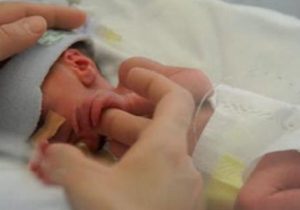Analysis and causes in a large retrospective study
 The Retinopathy of the premature (ROP) is a condition characterised by the abnormal development of blood vessels in the retina and is an important complication in preterm births in both developed and developing countries.
The Retinopathy of the premature (ROP) is a condition characterised by the abnormal development of blood vessels in the retina and is an important complication in preterm births in both developed and developing countries.
If the diagnostic ROP is in its early stages, treatment is aimed at ablation (destruction) of retinal areas lacking vascularisation, as ischaemic retinal areas produce angiogenetic factors responsible for the abnormal growth of pathological retinal vessels.
The laser therapy currently represents the therapy of choice (the so-called gold standard), while the cryopexy (cold treatment) is indicated in cases of marked opacity of the dioptric media or very poor mydriasis.
ROP has always been characterised by considerable international variability in prevalence rates and treatment modalities. In order to make a scientifically based comparison of different neonatal morbidity rates, practices and clinical standards, theInternational Network for Evaluating Outcomes in Neonates (iNeo)which currently includes neonatal populations from 11 countries: Australia/New Zealand, Canada, Israel, Japan, Sweden, Switzerland, Spain, the United Kingdom, Finland and Tuscany (Italy). The result of the research team's work led to a retrospective study published in the British Journal of Ophthalmology.
A very large sample of 48,087 infants, aged between 24 and 27 weeks' gestation, with stage 3 or higher ROP were included in the analysis, and treatment rates for each national network were considered. Significant differences emerged, with prevalence rates ranging from 25.2% to 91% and treatment rates ranging from 4.3% to 30.4%, with Switzerland and Japan at the lowest and highest extremes respectively. Lower gestational age and lower birth weight were identified as risk factors, while prenatal corticosteroid use was associated with lower rates of ROP treatment.
A lower risk of ROP was found in African-American infants compared to Caucasians, while Hispanic and Asian preterm infants from the Indian subcontinent had a higher risk.
An interesting result, which emerged from this study, concerns the correlation between ROP and caesarean sectionwhich until now had not been evaluated as a risk factor. Data from the Japanese Network population seem to indicate a significant reduction in the risk of stage 3 or higher ROP in infants delivered by caesarean section compared to those born by natural childbirth. However, the correlation between mode of delivery and severe ROP is probably very complex and requires further study.
Possible explanations for the scenarios varying from country to country can be found in the characteristics and genetic mutations specific to each population and the different treatment thresholds and clinical practices.
Bibliography
- Darlow BA, Lui K, Kusuda S, Reichman B, et al; International Network for Evaluating Outcomes of Neonates International variations and trends in the treatment for retinopathy of prematurity. Br J Ophthalmol. 2017 Oct;101(10):1399-1404. doi: 10.1136/bjophthalmol-2016-310041. Epub 2017 Mar
- Classification of ROP. http://www.ropitalia.it/assistenza-oftalmologica.html
Dr. Carmelo Chines
Direttore responsabile
